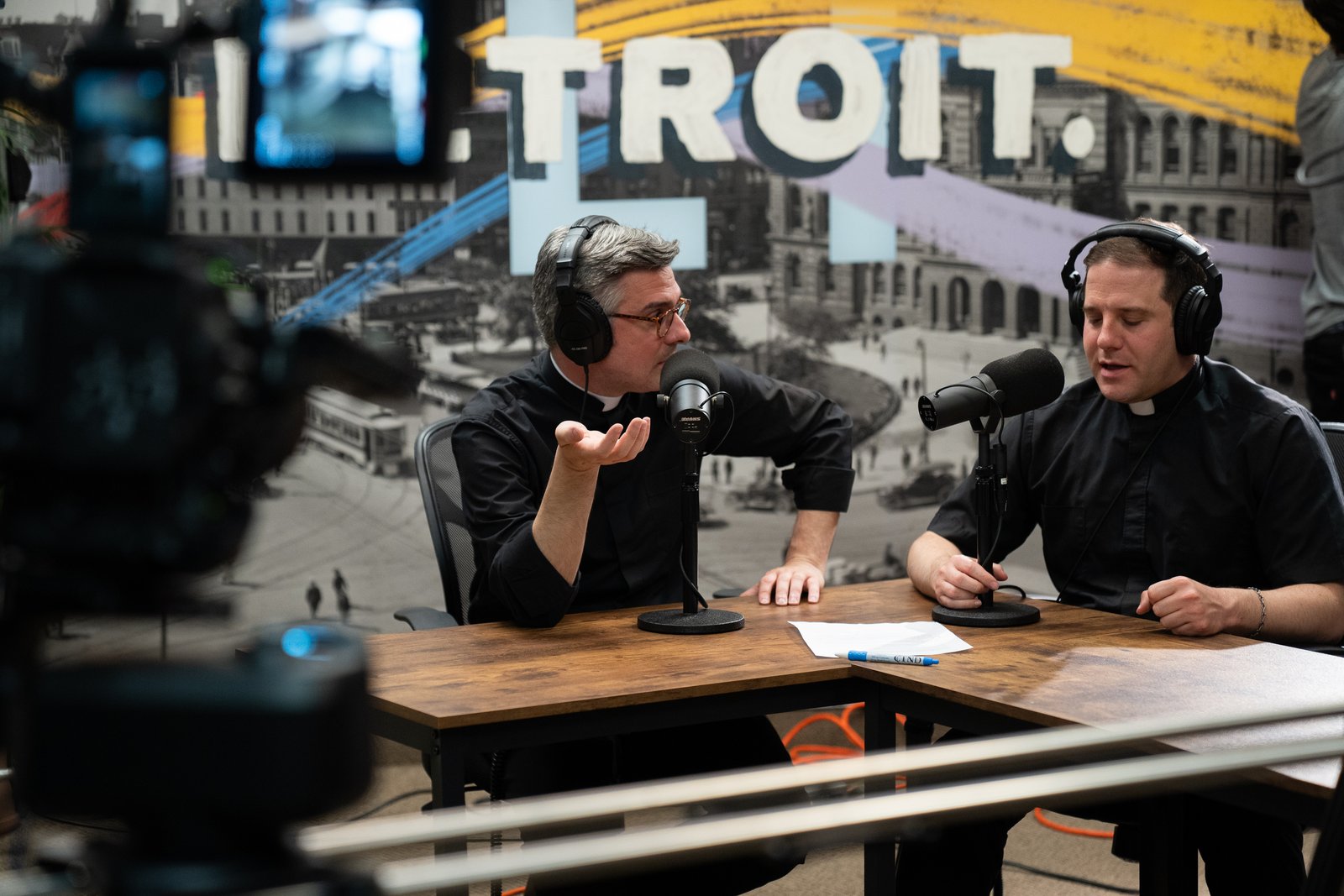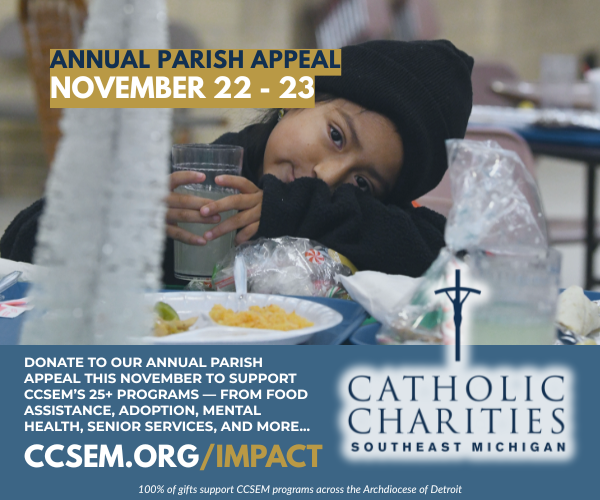Popularity of films like 2024's 'Conclave' can obscure the real, sacred truth of what's happening in the Sistine Chapel, experts say
DETROIT — Early Wednesday morning, 133 cardinals from around the world were sequestered in the Sistine Chapel for the start of the papal conclave as Archbishop Diego Ravelli, master of papal ceremony, proclaimed Extra omnes — “everybody out.”
While this ancient and secret rite has existed in close to its modern format for nearly 1,000 years, the Latin pronouncement that kicks off the voting process to elect the 266th successor of St. Peter is now familiar to more people than ever, thanks to the success of the 2024 movie, “Conclave,” starring Ralph Fiennes, Stanley Tucci and Isabella Rossellini.
A conclave, which derives from the Latin words con and clavis, meaning “with key” or “under key,” takes place after the death or resignation of a pope and the traditional nine-day period of mourning, said Fr. Tim Wezner, a canon lawyer and priest of the Archdiocese of Detroit.
“Conclave means they are separated and they’ve locked themselves in so they can have the total freedom to elect the next pope,” Fr. Wezner told Detroit Catholic. “It gives them the privacy they need, free from any outside interference, to get together and choose the next pope.”

Catholics and other spectators gathered in St. Peter’s Square on May 7 and locked into livestreams of the Sistine Chapel's chimney, waiting to see if the first day of voting would result in a new pope. At 9 p.m. Rome time, black smoke emerged, signifying no successful election, and the conclave will pick back up on Thursday morning.
Papal conclaves have historically lasted two or three days, Fr. Wezner said, but some have gone on much longer. They begin on the first day with a specific Mass for the election of the pope, followed by lunch before the cardinals process to the Sistine Chapel to begin the conclave.
“(The cardinals) will chant an ancient hymn, the Veni Creator Spiritus, until they get to the Sistine Chapel, and then once they are there the beginning procedures take place, where they all take an oath; first an oath of secrecy, as well as an oath that through the help of God and the holy Gospels they will elect the man that they believe God is calling them to elect as the next pope,” Fr. Wezner said.
And then, "Extra omnes," and the doors close to the outside world.
The chapel is cleared of everyone but the cardinals, with only a few helpers remaining, but only for the first few steps, Fr. Wezner said. The helpers leave before the first round of voting takes place.
The first day has only one round of voting, Fr. Wezner said, followed by the traditional burning of the votes and the release of either white or black smoke from the Sistine Chapel chimney — black meaning no pope, white meaning a new Holy Father has been elected.
The routine of the second day onward is a little different, Fr. Wezner said.

“On an average day for the conclave, the cardinals will gather again for Mass every day around 8 a.m. Rome time, and then they make their way again to the Sistine Chapel,” Fr. Wezner said. “Again, everyone is cleared out, so it is just the cardinals with the ballots. There is a time of brief prayer and then they cast their first ballot.”
Fr. Wezner explained that if one man receives the necessary votes to be pope during any of the ballots, he will be asked if he accepts the position and what name he will choose. However, if no one is elected following the first ballot, there is immediately a second round of voting. If the second round does not result in a pope, they will burn the first two rounds together with the black smoke.
The cardinals are expected to vote around 10:30 a.m. Rome time (4:30 a.m. in Detroit) on Thursday, with a second vote around noon (6 a.m. in Detroit), if necessary.
“In the morning, if no pope is elected, they will take a break for lunch and then return to the Sistine Chapel around 4 p.m. Rome time and do another two rounds of voting — two rounds in the morning and two in the afternoon,” Fr. Wezner explained.
If the afternoon ballots do not result in a new pope, then the smoke will be released for a second time that day, Fr. Wezner said. This process repeats day after day until a pope is elected. Once that happens, he is brought first to the so-called "Room of Tears" — known as such for the weightiness of the responsibility he will soon bear — where the new pope changes into his papal cassock and then to the balcony to greet the faithful.
Fr. Wezner said those who have seen the movie “Conclave” will be familiar with this process, as he believes this is one of the parts of the movie that was portrayed accurately.
The movie also portrays the cardinals filling out their ballots, folding them twice, and then processing to put their ballot into a chalice one by one, Fr. Wezner said.
“We don't actually know what the votes are,” Fr. Wezner said of the secret process. “We don’t know who is voting for whom or what the actual counts are because, as well as burning the ballots, any additional notes are burned. There are a couple of cardinals who are meant to keep a record, but that gets sealed in the secret papal archive, so only the pope can look back and see. While we know what the process looks like, and I think the movie displayed that part fairly accurately, we don’t know about the actual votes.”

The movie, which hit theaters in October 2024, became available for streaming on Amazon Prime on April 22, one day after Pope Francis' death. In the 24 hours following his death, movie viewership jumped 283%.
While the movie was cinematically artful, well-acted, and at times accurately portrayed events, Fr. Wezner said viewers should not treat it like a documentary. Key plot elements in the movie were not factual, Fr. Wezner said, including that the dean of the College of Cardinals routinely speaks with his outside staff to discuss other cardinals while the conclave is under way.
“They would not have these kinds of conversations, under pain of excommunication, during the conclave,” Fr. Wezner said.
In addition to smaller aesthetic or factual inconsistencies, which were included for drama, another crucial part of the story was blatantly incorrect, Fr. Wezner added: a cardinal shows up at the last minute to enter the conclave, to the surprise of all, as he is a cardinal in pectore — or a secret cardinal.
“A cardinal in pectore is a real thing that's in the Code of Canon Law, and we've seen this through history, the last time under (Pope) John Paul II,” Fr. Wezner said. “It’s when a pope names a group of cardinals, and he holds back from publishing one or any number of names, for safety reasons, or (because) it wouldn’t be prudent. Those men become a cardinal in pectore, in his heart or his chest.”
However, unlike in the movie, where the secret cardinal shows up to everyone’s surprise and is allowed to join the conclave, that would not be permitted by canon law, Fr. Wezner said.
“The way that works is that when it's safe, the Holy Father is to publish the name of the cardinal; it could be years later, and if the Holy Father were to die without publishing the name, then it was like that man was never a cardinal at all,” Fr. Wezner said. “He can't show up like he did in the movie after the death of the pope. He would not be allowed to enter the conclave.”
However, the more notable and damaging error was the portrayal of the cardinals themselves, Fr. Wezner said.
“I think, as with anything, we have to watch the movie with a discerning eye,” he said. “The movie really displays a negative portrayal of our bishops and our cardinals. Not all of them are saints, but I genuinely believe most of them are approaching this (conclave) with the solemnity and the spirituality that the event calls for, and I don’t think that was portrayed very well in the movie. It is the saddest portrayal of bishops and cardinals that I have seen in a long time. It's not that they aren't human, but I think (the film's creators) took that human side to an extreme.”
On a recent episode of "Cinema Verbi," an Archdiocese of Detroit podcast devoted to reviewing popular films, Fr. Brian Meldrum and Fr. Matthew Hood discussed "Conclave" at length, sharing a “Catholic response” to the blockbuster, Oscar-winning film.
Fr. Hood told Detroit Catholic the film's popularity and timing called for a response.
“Sometimes there might be the tendency to say, ‘It’s all bad, so we just avoid it,’ and we don’t say anything. But the Church needs to be able to speak into what people are experiencing, and we don’t want to just come from the perspective of seeking to condemn, but to ask, ‘What is the truth that is there?’” Fr. Hood said of the podcast episode, released Tuesday, May 6.
Discussions about movies like “Conclave” are the entire premise of "Cinema Verbi," which means “seeds of the word” in Latin. The priests seek out the goodness, truth and beauty planted in film, and with a movie as relevant and popular as “Conclave,” it's important to discuss and set the record straight, he said.

Fr. Hood said the misperceptions of power struggle and intrigue portrayed in "Conclave" can have "potentially damaging consequences of people thinking this is just what the Church is — the Church has this kind of Marxist power dynamic with people trying to fight for power. This is not even remotely accurate, so we need to be able to speak into that.”
While there are interesting and enjoyable aspects, it is not a remotely accurate depiction of a real conclave, and it is lacking in redeeming themes and characters, he added, summing up his review with a cinematic comparison: "'Dune' in cassocks."
“It had a power play dynamic similar to ‘Dune,’ which we also reviewed; no real good characters, they are all just fighting to be the last one in the room or the one with the authority,” Fr. Hood said. In contrast, “the (real) cardinals who have been in a conclave have explained it as an extended retreat, rather than battling it out or people trying to politick for themselves in a dramatic, drawn-out process. It is much more of a spiritual experience for those who are trying to seek and discern the will of the Holy Spirit, and be faithful stewards of the authority they have been given.”
Both Fr. Wezner and Fr. Hood agreed that while the movie shows the human side of the College of Cardinals, it neglects the spiritual side.
While the cardinals are human beings — and thus, the decision is a human one — the Church trusts that the Holy Spirit is at play, Fr. Wezner said. But that doesn't mean the Holy Spirit directly chooses the new pope.
“It’s obviously a spiritual, solemn occasion, but I think a lot of people think that somehow it is the Holy Spirit who directly chooses the pope, and somehow the cardinals are just meant to know, and that's not how we look at it theologically or spiritually,” Fr. Wezner said. “Just like with everything in life, God is speaking to us, guiding us and calling us to things. And in this case, we believe and are asking God that He will guide the cardinals, and we are praying that they will listen to Him and discern his movements about who they are called to elect, but it is still a human decision being made.”
Fr. Wezner encourages all the faithful to pray for the cardinals and the future pope, and even suggested that people consider “adopting a cardinal” in prayer.
“I am sure that the Holy Spirit is choosing someone and calling the cardinals to be open to (that person), but it is still their decision and whether they cooperate with the Holy Spirit or not,” Fr. Wezner said. “I’d like to trust that our cardinals are opening themselves to Him and following God's will in their selection.”
Copy Permalink
Culture and Media papal transition












